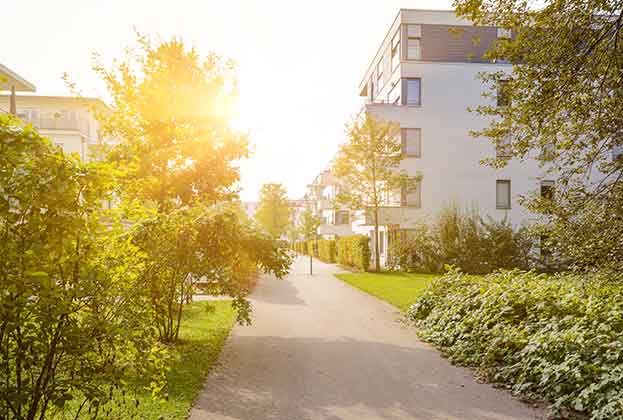By examining the movement patterns of the capital’s potential buyers we can identify sources of future demand
Who buys new builds, and who will be buying them in the future? Our analysis details the groups of potential buyers currently active in London and the patterns of where they are gravitating towards. Crucially, it reveals gaps – which will mean opportunities for developers. By considering those who are not buying, we can help identify sources of potential future demand for new build homes. The key question is: can we find those customers who can, but are choosing not to buy new build homes?
We know from our New Homes Market in Minutes that households across the UK tend to move further for new build properties than they would for second hand properties. High quality product, amenities and Help to Buy are often pull factors.
Even accounting for this, however, households moving into new build homes in London tend to remain within the same quadrant of London. For example, 74% of households who moved into a new build property in the North East quadrant came from that same quadrant.
London’s quadrants attract households with different characteristics. For instance, the North West quadrant seems to capture more households with children and lower incomes than the rest of the quadrants. There is a strong multi-generational, community-based household presence here relative to other areas, whereas the South West tends to have slightly younger, more affluent households.
Deliver the right product and widen the catchment area
Large regeneration sites such as Stratford and Wembley attract buyers from a much wider range than the second hand markets (buyers in these schemes will travel up to 3.5 times further for new build property).
Kidbrooke Park, a 4,800 home regeneration scheme in South East London, has managed to attract families to its scheme by delivering large numbers of family homes (including houses), but also, crucially, by delivering amenity and public realm suitable for children of a range of ages.
The site’s design interacts with the surrounding parkland and wetland, supporting residents’ physical and mental wellbeing – factors rising rapidly up the agenda for many.
By considering the target market and providing suitable amenities, this scheme has drawn in a significant number of families – and those families are moving from further away to live there. Of the households that have moved into the scheme in the last 2.5 years, 69% had children, far greater than the 18% average for the borough (of movers into new build homes).

Kidbrooke Park, South East London
Read the articles within Spotlight: The Missing Markets below.
.jpg)

.jpg)
.jpg)